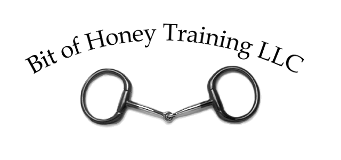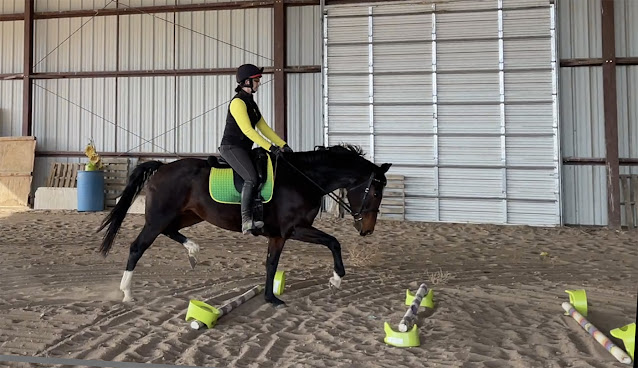I'm always on the hunt for a good way to explain dressage concepts such as collection. Teaching these ideas is tricky because the terms can mean different things in different equestrian circles. For example, in some disciplines collection is the same thing as shortening the horse's stride, extension is the same thing as lengthening the stride. The perspective I'm coming from is more of a classical dressage view, in which collection means far more than shortening the horse's stride length.
To create collection, first we have to create engagement in the hind end. What is engagement? It is increasing the bending of the joints of the hind legs including the fetlocks, hocks, stifles, and hips. Think of a human doing a squat, and how there are varying degrees of the depth of a squat. As a human squats and the joints of the leg bend, their butt lowers. As a horse squats, the joints of the legs bend, causing their haunches to lower.
Horses have the same anatomy as humans, positioned slightly differently as they travel on four legs instead of two. But engagement in a horse is like a human squatting.
One useful way to create engagement is with cavalletti. Raised poles, or even just ground poles laid out in succession can have tremendous effects on the horse.
In this first photo, you can see that Ferriana is really bending the joints of her LH leg. The poles encourage her to lift her feet higher, which creates the bending of the joints/engagement.
Once the hind legs' joints are flexing more, the horse will start to drop their haunches. This dropping of the haunches causes the horse to carry more weight in their hind end, which can also be described as shifting their balance towards the hind end, lifting the front end and withers (called collection).
In this second photo I drew in a yellow line where Ferriana's withers are, and a green line where her haunches are. You can see that her hind end has dropped visibly compared to the front end. So this photo shows true engagement (bending of joints in hind legs), and the resulting collection (more weight carried in hind, less weight carried in front).
Here's another way to look at it. If the front half of the horse is sitting on one side of a see-saw, and the back half of a horse is sitting on the other side of the see-saw, the weight distribution would look like these diagrams:
A horse naturally carries more weight on their front end, so when the horse is first learning to ride the balance of the see-saw is more like this:
As the horse's training progresses, we gradually ask them to carry more weight in their hind end with exercises such as pole work or cavalletti, getting closer to this:
As the horse continues to get stronger you can ask for more engagement in the hind end, with more flexing of the hind leg joints, which lowers the haunches, thus moving weight to the hind end and allowing the front end to lift, like Ferriana has in the yellow/green line photo.
This works on all kinds of horses. Ferriana is a warmblood, and she's very naturally able to become collected because of how she is built and her conformation. However, with systematic training and progression (just as a human weight lifter would gradually increase the weight they carry in a squat) any breed can be taught to do it.
Here is a photo of Raven, a thoroughbred, with extreme engagement in her hind end. Bending the joints of her hind legs this much is like coiling a spring. She is carrying all her weight on her hind legs, so that her front end has actually lifted off the ground, which has to happen in order for her to jump the fence in front of her.
So her diagram of weight distribution from this photo would look more like this:
You can also think of the coiling of the springs like this:
As Raven sits, the joints of the hind legs bend, the muscles flex, and the spring is loaded for her to push off and jump!
Here is a photo of Ferriana, with lots of engagement in her gait over the poles:
And here is Raven, a thoroughbred for whom this type of movement is slightly more difficult because of her conformation. You can see with proper conditioning and exercises she can do it very similarly to Ferriana:
Highboy has an even more difficult time with it due to his large size and conformation. Here is a photo of him cantering over the poles to create engagement in his hind end at that gait. You can see the joints of his LH leg really flexing as it's the leg bearing weight and getting ready to push off. The joints bending include his fetlock, hock, stifle, and hip:
 Dressage is the systematic training of the horse to progressively carry more weight on their hind end. Just as there are varying amounts of weight that the hind end carries at any moment, there are varying degrees of collection. But the whole thing starts with more flexing of the joints of the hind leg, or engagement.
Dressage is the systematic training of the horse to progressively carry more weight on their hind end. Just as there are varying amounts of weight that the hind end carries at any moment, there are varying degrees of collection. But the whole thing starts with more flexing of the joints of the hind leg, or engagement.
































































